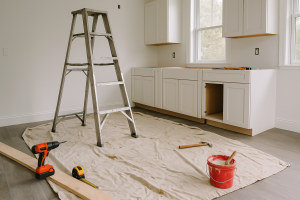Undivided VS. Divided co-ownership, what's the difference?
Team Angela Langtry | Real Estate Montreal by Angela Langtry
Let's start with Undivided Co-Ownership:
Here are the key points to an undivided co-ownership.
- The person owns a percentage of the building with the exclusive right to a private portion. All co-owners jointly own the building together.
- An undivided condo shares a cadastral number (i.e., lot number) of the building. All the co-owners have the same cadastral number for their unit.
- There is one certificate of location for the building.
- The co-owners share one tax bill for the building, and they pay the amount based on the percentage of their ownership. For example, if a triplex was converted into condos and each co-owner owns 33.3% of the building, they would pay 33.3% of the taxes. All co-owners are jointly responsible for paying the taxes. The taxes are cheaper since it is one tax bill, which is shared among the co-owners.
- A buyer has to put a minimum of 20% downpayment and finance with the bank that is financing the building. Only two banks in Quebec will finance undivided co-ownership: Desjardins or National Bank. Re-sale can be more challenging, as the seller needs to find a buyer with a larger downpayment.
- Normally, there is a designated notary that a buyer is obligated to sign with. If there isn’t, the buyer must go with a notary that specializes in undivided co-ownership.
- If the owner has a mortgage, the bank typically does not permit the owner to rent their unit because it is difficult for the bank to repossess the unit if the owner ever defaults on their mortgage. If the owner has no mortgage or if a small amount is owed, they are generally permitted to rent their apartment unless otherwise stated in the co-ownership agreement.
- Undivided condos typically sell for less than divided condos.
- The co-owners have a right of first refusal to purchase the unit for the amount in an offer presented to the seller. If the co-owner does not want to purchase it, they must sign a waiver of the first right of refusal, which must be provided to the notary in the event of a sale.
- To convert a property into undivided co-ownership, a notary will prepare an “Agreement of Indivision,” and a land surveyor will prepare a new certificate of location with the floorplan of each unit. This generally takes a few weeks and is less costly than divided co-ownership. Those who already live in an undivided co-ownership can convert the building into divided condos, but it will be subject to a 10% tax on the land’s value.
How does a divided co-ownership differ?
- The person exclusively owns 100% of their unit/condo.
- A divided condo has its own cadastral number (i.e., lot number). There is a separate cadastral number for the building. Sometimes, there may be several other cadastral numbers for the common areas and/or the parking space.
- The unit has its own certificate of location.
- The condo has its own tax bill. The taxes are more expensive than in an undivided co-ownership.
- An interested buyer can put a minimum of a 5% downpayment and finance with the bank of their choice.
- A buyer can sign the deed of sale with the notary of their choice.
- The owner of a divided co-ownership may rent their condo; however, you may want to verify this in your building rules first as some buildings ban rentals.
- Divided condos typically sell for more than undivided condos.
- The co-owners do not have a right of first refusal to purchase the condo if there is an offer.
- To convert a property (i.e., duplex, triplex, quadruplex, etc.) into condos, it can take up to a year and be more costly than converting a building into undivided co-ownership. First, one must contact the Regie du Logement, who will give their authorization if any of the units were rented in the last ten years. Meanwhile, contact a land surveyor who will apply to the city to separate cadastral numbers for each unit. This application needs to be approved by both the city and the province. These two steps can take 4-5 months. Once these steps are complete, a notary will do the conversion and prepare a “Declaration of Co-ownership.” Finally, if there is a mortgage on the building, the bank will need to refinance the property as condos. There may be extra costs for this.
If you have any questions and would like to learn more about the current real estate market, you can reach us anytime at:
514-781-2121
info@angelalangtry.ca



